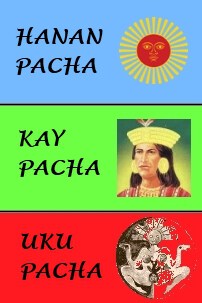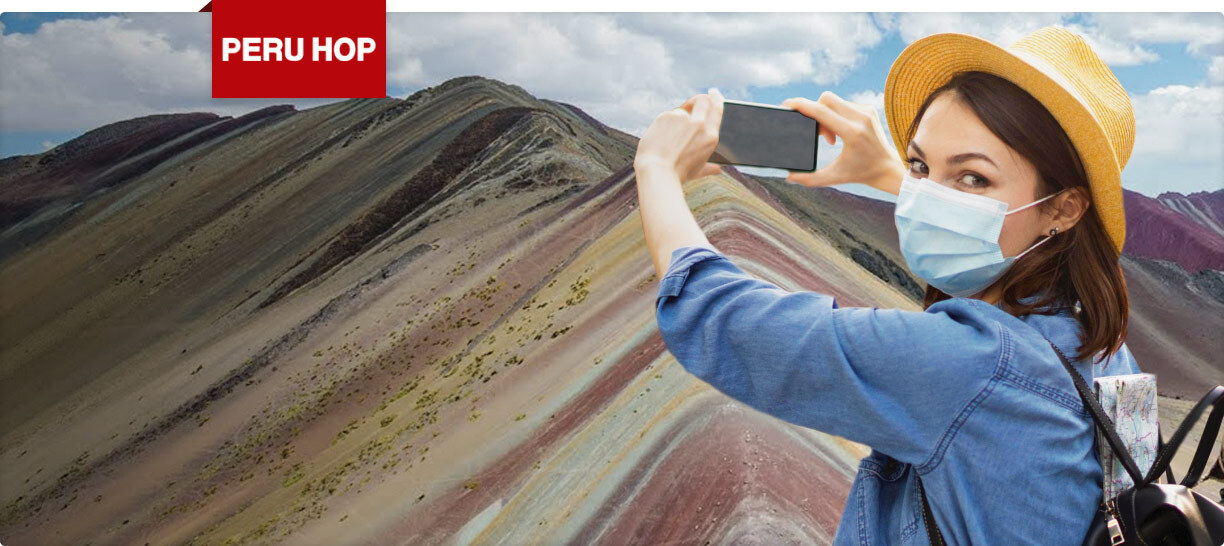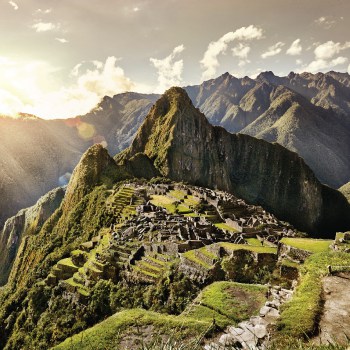The Three Pacha Realms of Inca Mythology
 In Inca mythology, the cosmos was divided into three realms or pachas: Hanan Pacha, Kay Pacha and Uku Pacha.
In Inca mythology, the cosmos was divided into three realms or pachas: Hanan Pacha, Kay Pacha and Uku Pacha.
These realms shared a similar structure to Catholic notions of earth, heaven, hell, helping Spanish missionaries advance their own religious notions in the New World while simultaneously allowing the Incas to preserve aspects of their own mythology within that of Catholicism (beliefs that remain part of Andean myth and religion today).
The three pachas represented three distinct planes of existence, interconnected and bridged by both physical and spiritual/mythological elements. Together, the three realms shaped Inca religion, the concept of the Inca cosmos and the day-to-day worldview of both the Inca nobility and the common man.
Hanan Pacha (Upper World)
Hanan Pacha was the upper world and the realm of Inca gods such as Inti (the Inca sun god) and his sister Mama Quilla (the Moon goddess).
The Incas believed that those who led a good life would ultimately ascend to Hanan Pacha in the afterlife.
Gods and their physical representations connected the upper realm of Hanan Pacha with the lower realm of man. According to Juan M. Ossio in his essay “Contemporary Indigenous Religious Life in Peru”, some sky divinities can be identified as heavenly mediators with the earth, such as the planet Venus (the goddess Chasca) and lightning (Illapa).
Others serve as earthly mediators with heaven, such as the Apu mountain spirits that bridged the gap between the realm of man and the “heavens” of Hanan Pacha. The Incas regarded mountains and their peaks as sacred, at times using them as locations for ritual sacrifices to the gods (sometimes using humans as sacrificial offerings).
Kay Pacha (Middle World)
Kay Pacha, literally “this world,” was the middle world of Inca mythology (there are various spellings, including Cay Pacha and Kai Pacha).
This was the physical realm of living beings and the world of birth, death and decay, equivalent to our own inhabited world. The earthly world of Kay Pacha was envisaged as a horizontal area lying between the upper realm of Hanan Pacha and the realm of Uku Pacha below.
According to Laura Laurencich Minelli in The Inca World, the human realm had witnessed numerous phases or destruction and recreation in Inca mythology. The Incas saw the gods as striving to create an ever more perfect form of mankind, with cycles of destruction and rebirth dealt upon Kay Pacha.

Uku Pacha (Under or Inner World)
Uku Pacha (variously Ukhu Pacha, Urin Pacha, Ucu Pacha) can be seen as the Inca underworld, although “inner world” or “below world” are perhaps more appropriate. Uku Pacha lay beneath the human realm of Kay Pacha, and was, perhaps unsurprisingly, a place where those unfit for Hanan Pacha would go upon their deaths.
The sense of Uku Pacha as an underworld, as a place of pain and suffering, was touched upon by chronicler and writer Garcilaso de la Vega (1539 – 1616) in First Part of the Royal Commentaries of the Yncas.
In his chronicling of the Incas, Garcilaso wrote that Uku Pacha was the “lowest earth, where they said that the wicked were sent; and to describe it more clearly they gave it another name – supaypa-huasin. This word means “the house of the devil.””

Supay of the Uku Pacha (photo © Aldoz, Wikimedia Commons)
Indeed, Uku Pacha was the dominion of Supay, the Inca god of death, ruler of the underground world and leader of a race of demons.
However, Uku Pacha should not be seen as an entirely negative concept. In Handbook of Inca Mythology, Paul Steele writes that Uku Pacha was associated “with the feminine earth mother and the bones of the ancestors.” Subterranean water was also a product of Uku Pacha, and the Incas regarded life-sustaining springs as a link from the human realm to the inner world.
The underground world of Inca mythology was not as bleak, therefore, as the typical image of Hell in the Christian faith.
Moving Between the Pachas
While the three realms of Inca mythology had defined boundaries, there were many physical and spiritual connections passing between them (as well as conceptual temporal correlations between past, present and future).
Lightning, rainbows, rain and light connected the upper world with the middle earth of the Incas, while mountains rose up from Kay Pacha to the heavens. Caves and springs, meanwhile, bridged the gap between the human world and the world below.
The gods themselves were also not bound to one particularly realm. Viracocha, for example, a creator god in both pre-Inca and Inca mythology, roamed the heavens (where he created the sun and moon) having first risen from the depths of Lake Titicaca (a link to the world below). He also traveled within the realm of man, Kay Pacha, disguised as a beggar.
ENTERTAINMENT TIP: If looking for fun at night, or to watch sports during the day, or even a taste of home, visit the Wild Rover Hostels Chain for great food, sports and beer! Entrance to their bars is free even for non-guests
References:
- Juan M. Ossio – “Contemporary Indigenous Religious Life in Peru”; Native Religions and Cultures of Central and South America; ed. Lawrence Eugene Sullivan; Continuum International Publishing; 2002.
- Laura Laurencich Minelli – The Inca World; University of Oklahoma; 1999.
- Garcilaso de la Vega – First Part of the Royal Commentaries of the Yncas; Hakluyt Society; 2010.
- Paul Steele – Handbook of Inca Mythology; ABC-CLIO; 2004.
This article is part of the Inca History of Peru series.











1 comment for “The Three Pacha Realms of Inca Mythology”